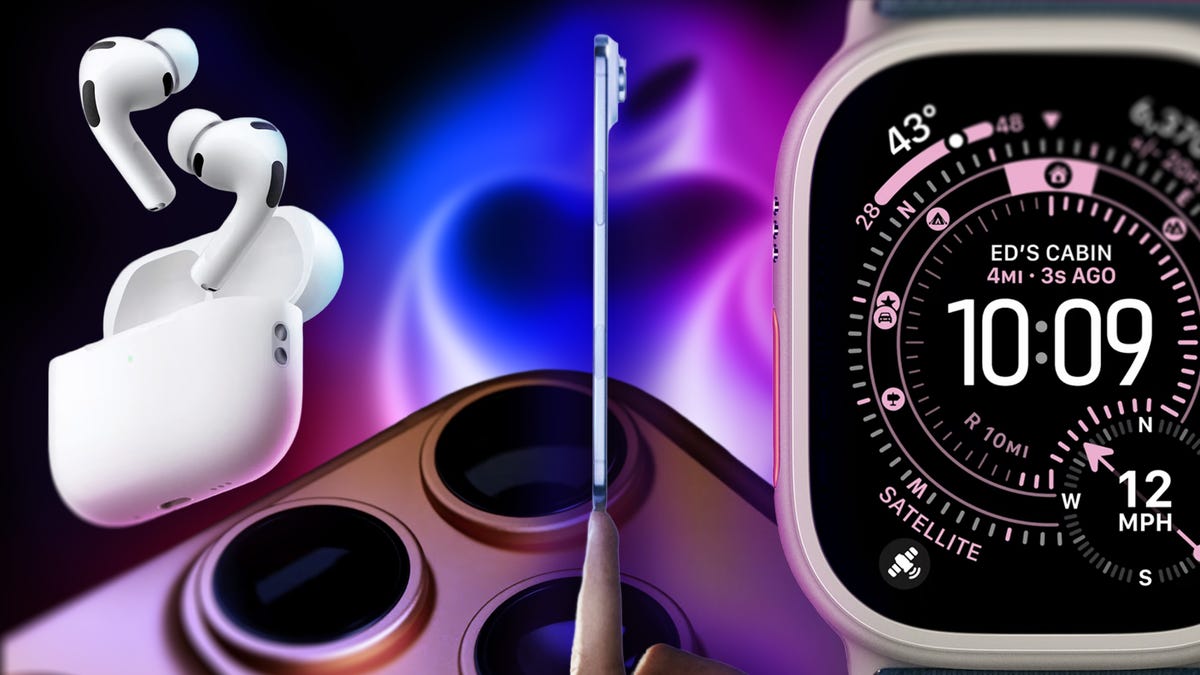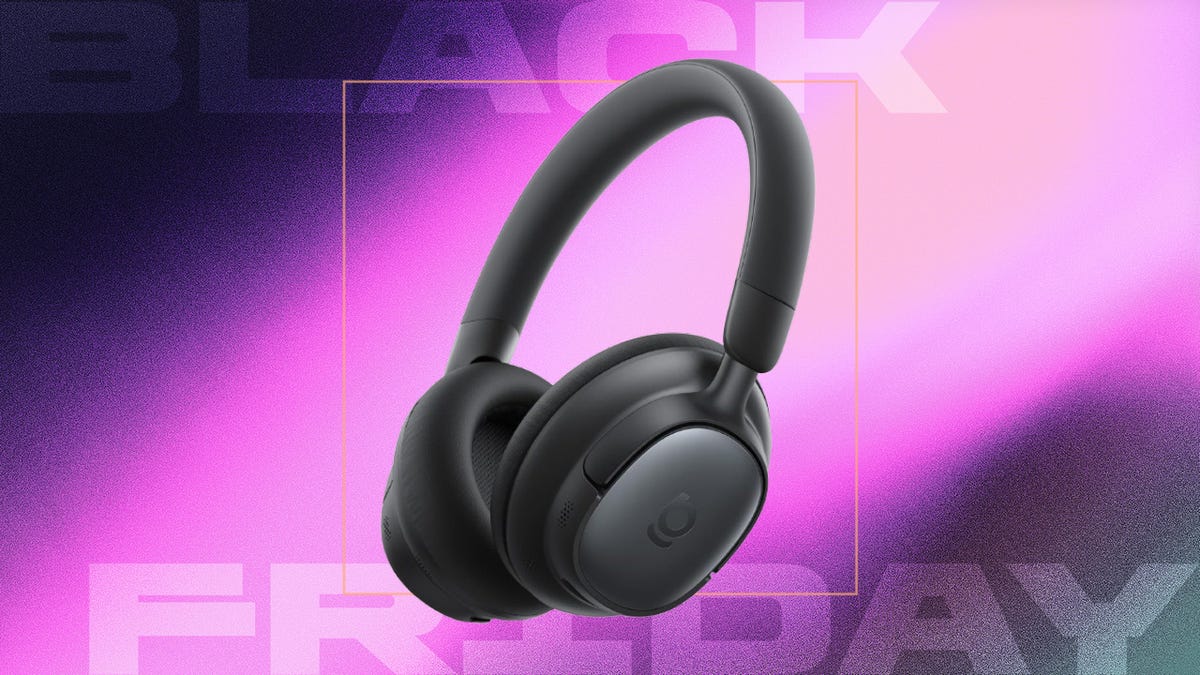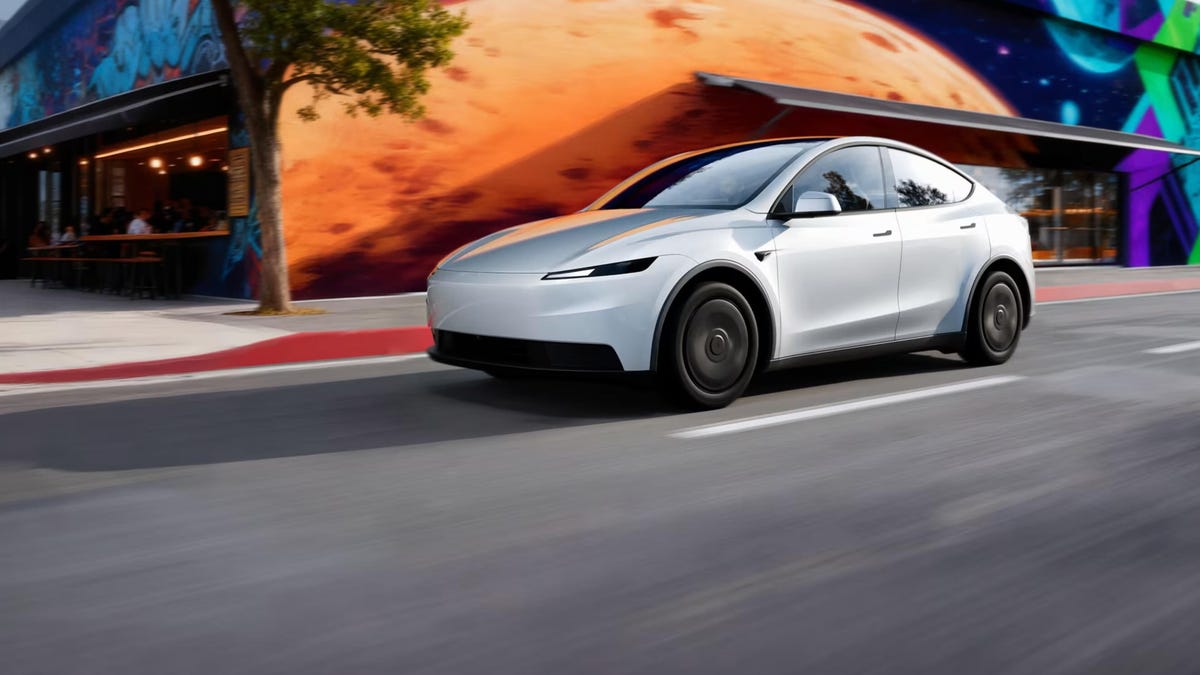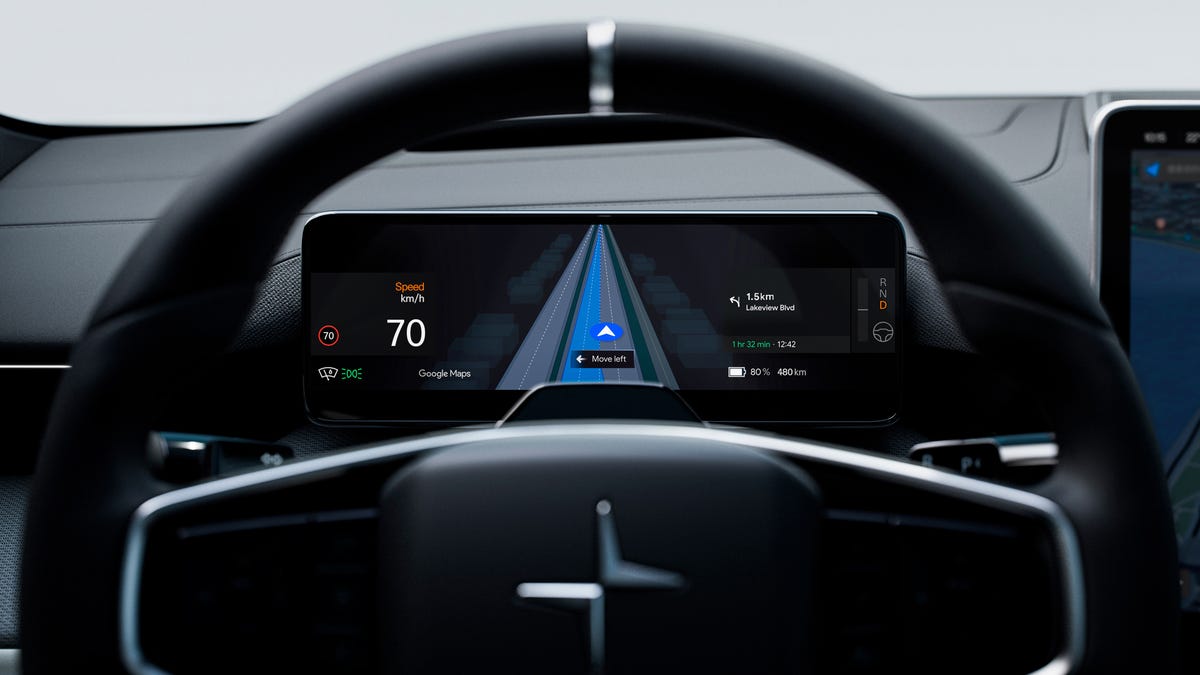Technologies
Everything Announced at Apple Event 2025: iPhone Air, iPhone 17, AirPods Pro 3 and New Apple Watches
Apple’s annual September reveal of its latest mobile devices featured the brand new iPhone Air, AirPods Pro 3 with heart-rate sensing, the iPhone 17 lineup and new Apple Watches.

Each September, Apple’s product release playbook dials up the unveiling of the company’s newest line of iPhones, along with a variety of complementary gadgets. On Tuesday, the company took the wraps off the iPhone 17 in all its variations, most notably the new skinny iPhone Air, along with new Apple Watches — Series 11 and Ultra 3 — and an upgrade to its 2-year-old AirPods Pro 2 earbuds.
Along with the hardware, Apple is rolling out the new versions of the devices’ respective operating systems, iOS 26 and WatchOS 26, both of which have been in public beta all summer. (The final version of iOS 26 will be available on Monday, Sept. 15.) The new Liquid Glass interface design may even seem routine to you by now.
Many of the new devices’ capabilities come from new features in their operating systems, and throughout Apple stressed health and fitness as one of the primary drivers. It deemphasized how many of the features’ analysis capabilities — notably most of the new heart-rate sensing and Live Translation in the AirPods Pro 3 — really rely on the iPhone for their heavy lifting.
Given Apple’s struggles with its AI efforts, especially given how much it stressed Apple Intelligence at previous events, the company came as close to downplaying it as it could: There was only the occasional mention of features being driven by AI and the increased neural power in the new A19 Pro processor. And despite no discussion of smart home tech, there was a brief hint in the iPhone Air announcement.
For more in-the-moment commentary, check out ourApple Event live blog.
Don’t miss any of our unbiased tech content and lab-based reviews. Add CNET as a preferred Google source.
iPhone 17 boasts a better screen
The update to Apple’s most mainstream model comes in pastel colors. Notably, the base iPhone 17 now has a ProMotion (120Hz VRR) display, which was formerly only on the Pro models. The screen is larger (6.3 inches) and brighter (up to 3,000 nits) with an improved scratch- and glare-resistant coating. ProMotion has been a much-wanted upgrade; I think there’s probably some dancing going on right now. Inside, it incorporates the A19 chip with a five-core GPU and adds fast charging.
The new front camera has an 18-megapixel square sensor for more flexibility in framing, alongside a larger field of view to enable Center Stage and stabilization. It still has two cameras, though the main camera is bumped to 48 megapixels via Dual Fusion or 24 megapixels as standard.
It starts at $799 in the US — the 16E remains in the line at $599 — and all the iPhones are available for preorder now. It’s £799 in the UK and AU$1,399 in Australia.
The iPhone Air is thin but powerful
Thin seems to be in for phones this year — at least for manufacturers, since buyers don’t seem to be quite as interested and iPhone buyers even less so. Did anyone ask for a super thin iPhone? But in the continuing absence of a foldable iPhone model, what’s a company to do? Behold the iPhone Air, at 5.6mm thick.
It has a polished titanium frame and Ceramic Shield on both sides, which makes some people just want to touch it. According to the company, it’s almost entirely battery on the inside, with Apple claiming all-day battery life.
It’s got high-end specs, too: a 6.5-inch ProMotion XDR display and the A19 Pro processor found in the Pro models. The processor incorporates neural accelerators into each GPU core (six of them), bigger caches and more, giving it quite a bit of computing power.
A new N1 chip and C2 modem improve connectivity (Wi-Fi 7, Bluetooth 6) and power conservation. The device has 48-megapixel Fusion and 12-megapixel wide-angle cameras, the Center Stage front camera, and a way to combine front and back cameras live.
It requires all-new accessories, including a MagSafe pack (80 hours) and a thin, translucent case. It starts at $999 (£999, AU$1,799).
iPhone 17 Pro and Pro Max deliver a love letter to videographers
The flagship iPhone Pro models tend to differ only by screen size (now 6.3 and 6.9 inches), and their unique features are made possible by their higher-powered processors, more flexible camera arrays and other component differences over the lower-end models.
Like the Air, the iPhone 17 Pro uses an A19 Pro processor with updated cooling and thermal management — a vapor chamber — and has a Ceramic Shield back and front. Apple promises 39 hours of video playback.
The cameras are usually the highlight of the Pro, and that remains true: It has an 18-megapixel front Center Stage camera and a triple-camera Fusion Telephoto system, with three 48-megapixel cameras, including a 4x-8x telephoto for a maximum of 200mm equivalent. The phones can capture ProRes Raw and Genlock (to synchronize cameras for video), which should tickle the fancy of pro videographers.
The Pros now come in orange, which isn’t everyone’s favorite, and there’s a new 2TB storage option. They start at $1,099 (£1,099, AU$1,999).
Apple Watch Series 11, Watch SE and Watch Ultra 3 get redesigns
The Apple Watch Series 10 is our Editors’ Choice for smartwatches. The next-generation Watch Series 11 shrinks the thickness, with a more scratch-resistant front glass. It adds 5G support and better power management for up to 12 hours of battery life. A new Flow watch face takes advantage of Liquid Glass visuals. It adds blood pressure tracking (based on blood flow) to find indications of high blood pressure and sleep score from WatchOS 26. Prices start at $399 (£369, AU$679).
There are new bands in new colors, too.
It’s been three years since the last iteration of the Watch SE. Now, we get the Watch SE 3, with the new S10 chip with 5G wireless. It still delivers 18-hour battery life and an always-on display. There’s wrist temperature sensing for ovulation tracking, it gets sleep apnea tracking, sleep score and more. Prices start at $249 (£219, AU$399), and preorders start now.
Apple’s top-of-the-line smartwatch, the Ultra 3, is updated over the Watch Ultra 2 with a wide-angle OLED (smaller bezels mean more display area). Apple has given it emergency-related satellite connectivity, which required a new antenna and receiver. It also comes with increased battery life. Prices start at $799 (£749, AU$1,399).
AirPods Pro 3 upgrade includes live translation
The AirPods Pro 2 version released in 2023 offered only incremental hardware upgrades over the 2022 models (hence the lack of a name change). The AirPods Pro 3 are smaller, with an updated design that introduces foam-ish eartips for better noise isolation and upgraded active noise cancellation, live translation with adaptive ANC for better focus on the speaker, five sizes of ear tips and IP57 water resistance. Fitness enhancements include heart-rate and calorie tracking, among other updates, which come from iOS. Battery life increases to eight hours with ANC and 10 hours with transparency.
The live translation can be somewhat awkward, though, or as CNET’s Macy Meyer puts it, it’s fluent in convenience, not culture. The price hasn’t changed; they still start at $249 (£219, AU$429).
Notable new accessories for the iPhones
The iPhone Air debuts with new accessories. If you want to keep it thin and still have some level of protection, Apple is offering a $39 polycarbonate bumper that wraps around the edges. Aside from drop protection, I know I’d need it simply to keep the slight phone from slipping out of my hands. There is also a traditional $49 clear MagSafe Case along with an opaque Beats-branded polycarbonate case for $45. If for some reason you want to turn your ultrathin phone into a thicker one with longer battery life, you can pick up the $99 MagSafe battery.
The redesign of the camera section of the iPhone 17 Pro and Pro Max means it needs a new case design, and in addition to all the newly designed versions of the usual cases Apple introduced a $59 MagSafe case made of a new TechWoven material — colored yarns of recycled polyester woven into a textured material and coated with polyurethane, or PTU. Presumably, it will fare better than the FineWoven cases Apple released with the iPhone 15.
You can also get a novel (for Apple) $59 Beats Kickstand Case, which looks like the standard polycarb case. The kickstand, though, isn’t a kickstand; it’s a handstrap with a small bit on the end that you can use for standing the case on its side. The kickstand case also comes in a version for the iPhone 17.
For many of the iPhone cases Apple launched yesterday, the company introduced magnetic attachment points. That makes them compatible with its new $59 Cross-Body Strap. On one hand, I’m not sure I want to trust my $1,200 phone to some magnets or my propensity to walk into walls and doorways. On the other, it’s probably safer than my back pocket.
Technologies
Here’s How Much Tesla’s New Affordable Electric Cars Cost
What do you get with the stripped-down Model Y and Model 3? A lower price, for starters.
Technologies
This New Car Feature Uses AI to Keep You From Missing Your Exit
Google Maps’ live lane guidance is being integrated into Polestar’s head-up display.
Technologies
Hurry to Nab the Baseus Bowie MH1 Headphones for Over Half Off With This Early Black Friday Deal
This deal drops the price of this premium pair to just $47, but this discount ends soon.

High-quality noise-canceling headphones can cost a pretty penny, especially if you are after adaptive ANC, all-day comfort, and a reliable battery life. Most options with all these features sit well over $100, but we just found a way to score a premium pair for less than $50.
Amazon has a solid early Black Friday deal on the Baseus Bowie MH1 headphones. You can get them for 20% off right now, which drops the price to $80. But stack that with the $25 on-page coupon and use the promo code 8JWTGEUN at checkout, and you slash another $33 off. That brings the final price down to just $47, which is a steal considering all the features you are going to enjoy.
The headphones come with cloud-soft protein leather earcups with resilient memory foam for cloud-like comfort. The pair is capable of blocking up to 99.8% of noise with –48 dB deep noise cancellation, and it adapts to your surroundings as needed.
Hey, did you know? CNET Deals texts are free, easy and save you money.
The 36mm drivers and full-range LCP diaphragms give you clear, rich sound no matter what you listen to. In addition, with Baseus Immersive Spatial Acoustics, the audio surrounds you for a more natural listening experience. For clearer calls, the headphones also pack 5-mic sound sensors with AI-powered voice enhancement and wind-noise reduction. You won’t have to repeat yourself constantly.
Battery-wise, you get up to 80 hours of playtime with ANC off, and 55 hours with it on. A quick 10-minute top-up can also get you up to an additional 10 hours of playback, which is great for when you’re out and about.
HEADPHONE DEALS OF THE WEEK
-
$200 (save $151)
-
$199 (save $150)
-
$329 (save $100)
-
$328 (save $72)
Why this deal matters
High-end audio gear doesn’t come cheap. This deal takes over 50% off a powerful pair of headphones, making the upgrade easy. It won’t last long, though, so it’s best to snap it up sooner rather than later.
Join Our Daily Deals Text Group!
Get hand-picked deals from CNET shopping experts straight to your phone.
By signing up, you confirm you are 16+ and agree to receive recurring marketing messages at the phone number provided. Consent is not a condition of purchase. Reply STOP to unsubscribe. Msg & data rates may apply. View our Privacy Policy and Terms of Use.
-

 Technologies3 года ago
Technologies3 года agoTech Companies Need to Be Held Accountable for Security, Experts Say
-

 Technologies3 года ago
Technologies3 года agoBest Handheld Game Console in 2023
-

 Technologies3 года ago
Technologies3 года agoTighten Up Your VR Game With the Best Head Straps for Quest 2
-

 Technologies4 года ago
Technologies4 года agoBlack Friday 2021: The best deals on TVs, headphones, kitchenware, and more
-

 Technologies4 года ago
Technologies4 года agoVerum, Wickr and Threema: next generation secured messengers
-

 Technologies4 года ago
Technologies4 года agoGoogle to require vaccinations as Silicon Valley rethinks return-to-office policies
-

 Technologies4 года ago
Technologies4 года agoOlivia Harlan Dekker for Verum Messenger
-

 Technologies4 года ago
Technologies4 года agoiPhone 13 event: How to watch Apple’s big announcement tomorrow


